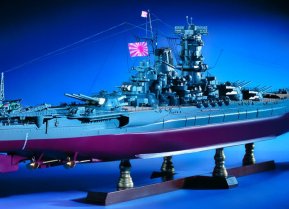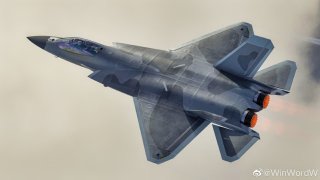China's New J-35 Stealth Fighter Is Getting Ready for Aircraft Carrier Duty
China's J-35 fighter aircraft, a potential frontline naval fighter, has been tested on the Liaoning aircraft carrier, signifying advancements in China's naval air capabilities.
Summary: China's J-35 fighter aircraft, a potential frontline naval fighter, has been tested on the Liaoning aircraft carrier, signifying advancements in China's naval air capabilities. Both of China's carriers, Liaoning and Shandong, utilize ski jump ramps for aircraft launches, traditionally operating the J-15 fighter. The J-35's deployment suggests exploration of its use on these platforms, despite limitations compared to catapult-assisted launches. Developed for operation from China's electromagnetic catapult-equipped Type 003 Fujian carrier, the J-35 promises enhanced radar and reduced signature, alongside a significant payload capacity. This development marks a significant step in China's quest to modernize its naval air force.
J-35 Fighter: China's Next-Gen Aircraft Hits the Deck of Liaoning Aircraft Carrier
Last month, a mockup of China's J-35 carrier-capable fighter aircraft was being employed in tests aboard the People's Liberation Army Navy (PLAN) aircraft carrier Type 001 Liaoning. Neither the Liaoning nor the Type 002 Shandong are equipped with catapult launch gear and instead employ ski jump ramps. Both of the PLAN's aircraft carriers have exclusively operated the Shenyang J-15, the Chinese-made version of the Russian Sukhoi Su-33 carrier-based fighter.
As TheWarzone reported, the sighting of the aircraft on the PLAN's first carrier could be an indication of further progress in the J-35's path to a career as a frontline naval fighter. Moreover, it further raises the possibility of a version of the jet operating from Beijing's two in-service carriers.
The Liaoning has since left the Dalian Shipyard on Thursday and is reported to be conducting sea trials in the Yellow Sea – which according to reports from the Hong Kong newspaper Wen Wei Po will continue through much of next week. China's first aircraft carrier has recently completed a year of maintenance and refit.
The aircraft carrier was launched in 2012, becoming the first carrier commissioned into the PLAN's Surface Force. It was originally developed by the Soviet Union as an Admiral Kuzetsov-class multirole aircraft carrier, but was completed before the dissolution of the Soviet Union. The Uncompleted warship was later sold to the Chinese by Ukraine in 1998 and towed to the Dalian naval shipyard.
According to a report from Newsweek, the successful deployment of the J-35 on the Liaoning could portent its use on China's other aircraft carriers, notably the Type 002 Shandong and the Type 003 Fujian. However, only the latter – the still-under-construction – Fujian is equipped with electromagnetic catapults. The PLAN may be determining if the advanced aircraft can be employed via the ski jump of the Type 001 and Type 002 flattops.
"One most straightforward assessment is that the Liaoning, which has long been designated as a test bed for PLA carrier capabilities, is conducting experiments on the J-35 as a viable carrier-borne fighter jet," Collin Koh, a senior fellow at the S. Rajaratnam School of International Studies in Singapore, told Hong Kong newspaper the South China Morning Post (SCMP) on February 23.
Yet, as previously reported, launching aircraft from a ski jump requires that an aircraft's payload be significantly decreased compared to one that takes off with catapult assistance.
The J-35 – What We Know
Developed for both the People's Liberation Army Navy Air Force (PLANAF) and People's Liberation Army Air Force (PLAAF), reports of the J-35 first circulated in June 2020 – which claims that it was a more "production-ready" version that featured smoother lines, had a larger radome for bigger radar, and a closer alignment of control surfaces to reduce its radar signature. The J-35 carrier-based variant of the FC-31 made its maiden flight on October 29, 2021. It features a catapult launch bar and a wing-fold mechanism.
The twin-engine fighter was developed to be operated by the PLANAF from China's future Type 003 Fujian-class aircraft carriers. It would be capable of operating with the carrier's electromagnetic Aircraft Launch System (ALS) – which should bear similarity to the U.S. Navy's Gerald R. Ford-class EMALS launch system.
As previously reported by Harrison Kass for The National Interest, the FC-31/J-35 prototypes are believed to employ the RD-93 engines. China is also understood to be working on an improved engine, the WS-13E, which is expected to offer 22,000 pounds of thrust and the WS-13 could possibly replace the RD-93 on the FC-31.
Currently, the FC-31 is expected to be able to handle a payload of 18,000 pounds. Internally, the FC-31 can handle four munitions weighing a total of 4,400 pounds. Externally, the FC-31 has six hardpoints, capable of carrying 13,000 pounds. The jet's main armaments include the PL-10 short-range missile and the PL-12 medium-range air-to-air missile.
Given that payload, it would be quite the challenge for it to launch off China's older carriers, but perhaps tests are being conducted to see what the aircraft can actually carry.
Author Experience and Expertise: Peter Suciu
Peter Suciu is a Michigan-based writer. He has contributed to more than four dozen magazines, newspapers, and websites with over 3,200 published pieces over a twenty-year career in journalism. He regularly writes about military hardware, firearms history, cybersecurity, politics, and international affairs. Peter is also a Contributing Writer for Forbes and Clearance Jobs. You can follow him on Twitter: @PeterSuciu. You can email the author: [email protected].
Image Credit: Twitter Screenshot.


